The Eye
You, as an observer, do not see objects. You see the light that is reflected off the object. If it weren't for light, the audience would see nothing at all - therefore the lighting designer has total control over what the audience sees, and doesn't see (which can be just as important).
When light hits an object, some of the light is absorbed. Some of the light, usually a color tinted by the light that is not absorbed, is reflected to the viewer. The retina then captures an inverted image refracted by the pupil which is interpreted by the brain.
Energy wavelengths range from smaller than .000000001 millimeter to thousands of kilometers. The full range of energy is called the electromagnetic spectrum which includes cosmic, gamma, X rays, ultraviolet light through infrared light, microwaves, T.V., radio and electric power.
A small portion of this spectrum is visible light. Most people can see a range of 4/10,000 to 7/10,000 of a millimeter. Radiant energy travels about 186,000 miles per second.
When dealing with color or intensity, we must remember that normally we are talking about these values in a relative fashion. If I asked ten people to submit a sample of canary yellow, I would likely get nine different color chips, even though at first we agreed that we had a clear idea of what defines canary yellow.

Brightness or intensity are also relative. What is bright sometimes may be dark other times. Intensity and color is also very subject to contrast and evaluation.
A wavelength of light (color) may occur with different intensity (strength); we call this brightness. We may consider this the quantity of energy or the amplitude of the light waves.
Measuring Intensity:
\fút-‘kan-dəl\
Footcandle - the direct illumination on a surface one foot from a specifically controlled candle.
\’lü-mən\
Lumen - the quantity of light falling on a one square foot screen one foot from a candle.
Bright snow: 10,000 footcandles
Bright artificial: 100 footcandles
Average stage: 50 footcandles
House lights: 10 footcandles
Lowest perceivable: .000001 footcandles
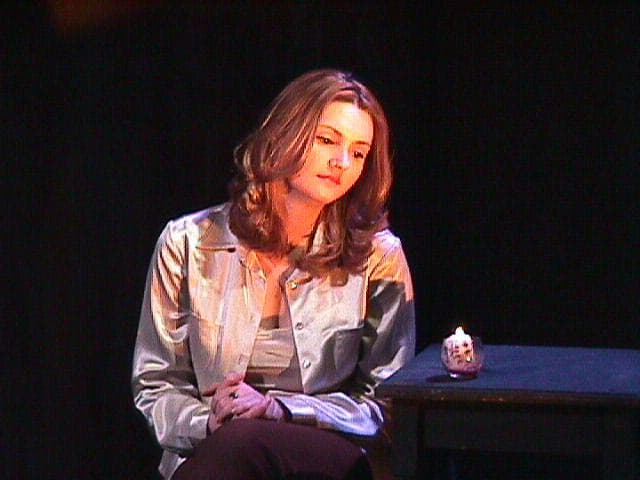
The Inverse Square Law:
The intensity of light varies in inverse proportion to the square of the distance from its source.
A spotlight 100 feet from a stage will create a beam 1/4th the intensity of the same spotlight 50 feet away, but the area lit will be 4 times as big. Energy is not lost; it is simply spread out over a greater area.
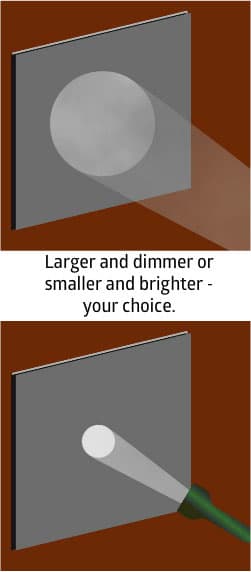
The retina is covered with 75 to 150 million "rods" (black and white / intensity), and 6 or 7 million "cones" (color vision). Cones are less sensitive to light, while rods provide more fine detail to what we see. If you've ever walked through the woods through sunset and night, you can keep track of your surroundings, but the forest loses its color and turns black and white.
The eye can not focus clearly on red and blue at the same time. Magenta objects appear fuzzy regardless of the colors around them. Why do older performers like pink light? Because eyes can not focus on red and blue at the same time, the "fuzziness" helps hide wrinkles and blemishes.

Pupil size reacts to changes in intensity. After a while, however, the eye adjusts to any light level. Alcohol, drugs, age, and other stimuli may affect the effectiveness of the pupil.
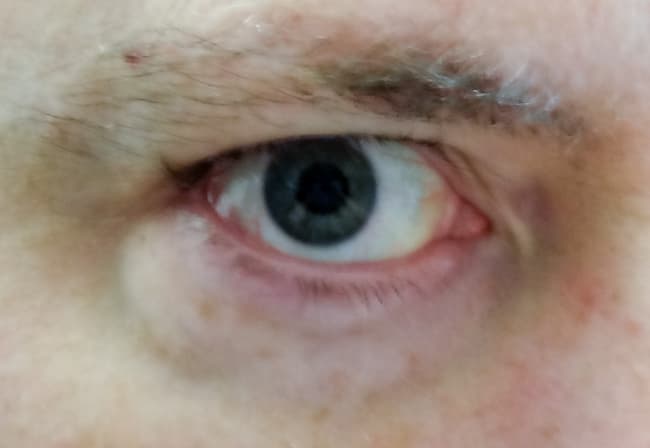
Photos taken within one minute of each other.
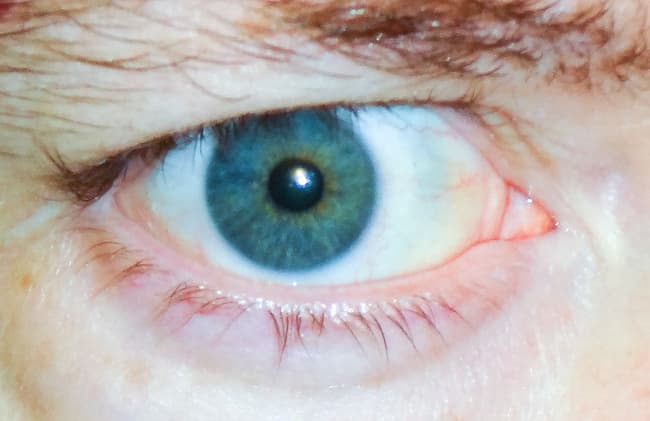

We see best at:
- Low levels of intensity after our eyes have adjusted
- When the intensity is sustained
- The color of light is white (full-spectrum)
- The object is in high contrast to its surroundings
| The eye can adjust to a dramatic range of intensities (sunny day vs. moonlit night), typically taking only a few seconds. When intensity goes from bright to dark, it takes longer for the eye to adjust than it does when going from dark to bright. The rapid adjustment from dark to bright can cause pain to the iris muscle. |

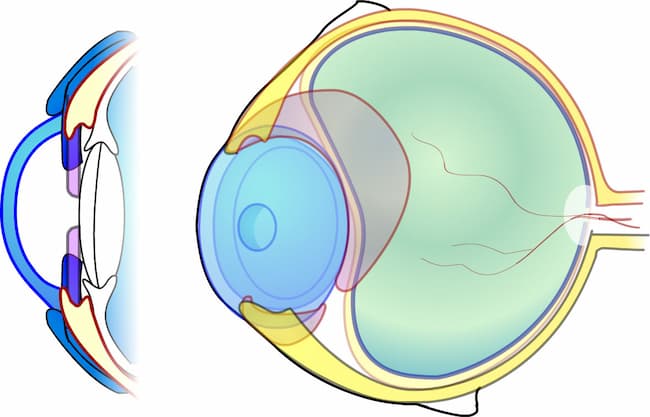
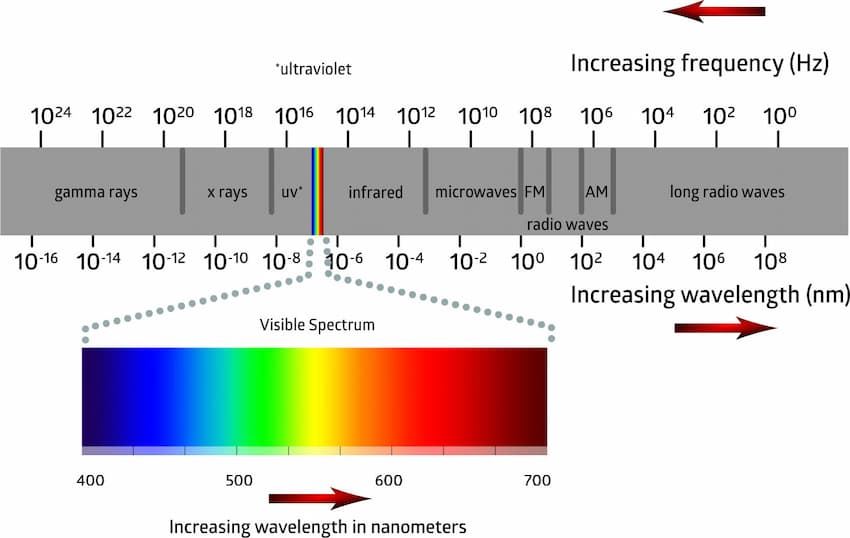

 © Multimakers Multimedia
© Multimakers Multimedia